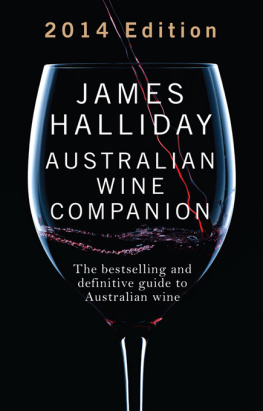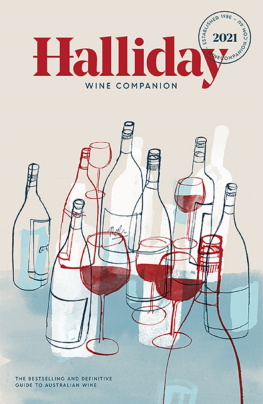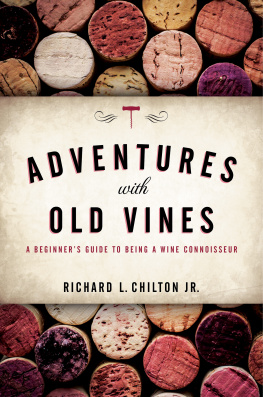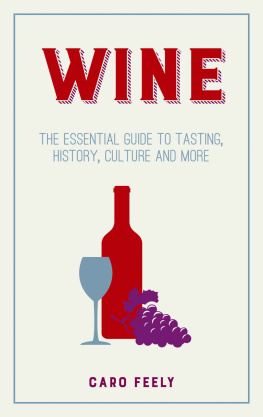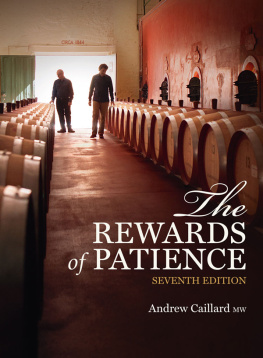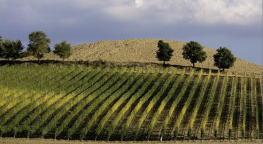
Contents
How to use this ebook
Select one of the chapters from the and you will be taken straight to that chapter.
Look out for linked text (which is in blue) throughout the ebook that you can select to help you navigate between related sections.
BEFORE THE BOTTLE
Introduction
This is a how to and why rather than a what book. It is not a factual volume there are plenty of those but an exploration of how to taste, observe, describe, evaluate and enjoy wine. It aims to help you make up your own mind confidently, by giving you the means to do so.
This book has been enlarged, and much has changed, but the structure remains the same. Completely new are a number of essays on issues that are pertinent now in a way they were not 20 years ago: Climate Change; Organics, Biodynamics, Natural Winemaking; Closures, Alcohol Levels, among others; and there is a new section on Blind Tasting.
The In the glass tasting section has been made more complete, with the addition of preparatory reading suggestions from the book, plus subsequent check-and-reinforce questions, and an option to subscribe to my website for specific wine recommendations for the .
Not surprisingly the central section, In the bottle , on grapes and their wines has had to be largely rewritten, and two kind friends have also been of special help: Chris Tew updated the statistics in the map section with figures from 2015, while Robin Lee helped revise the maps themselves. Thank you both!
Gone are the old certainties: Australian Chardonnay was golden yellow, ample and oaky; you could age fine white burgundy to a mellow nuttiness over 10, 15, 20 years; freshly bottled white wine was pale-lemon, fragrant and fresh, not orange-hued, redolent of dried apricots, and tannic. Other certainties perhaps deserve to be less secure than they were: new wood will always improve the texture of tannic reds; blind tasting is the only true measure of a wines quality; that alcohol levels are not an issue, only balance is. I discuss these.
Quality, of course, exists at every level, and I look in detail at how one might think about it in a new tasting, but it must surely be, above all, about drinkability. Sebastian Payne, long-term head wine buyer for the UKs Wine Society, puts it very succinctly: Its whether you want another glass or not, isnt it? And Boekenhoutskloofs Mark Kent put it thus: Quality lies in the second half of the bottle, not in the first taste. Quite so. But our relationship with alcohol has also changed.
With so many wines at well over 14% abv today we are apt to forget that great wines from only a few decades ago were 12.5% (90 Latour or Le Pin), 13.5% (89, 90 Petrus). And a 14.5% companion at table is, maybe surprisingly, very different, noisier company than a 13% to 13.5% partner.
Finally, a personal note. Ten years ago I was investigating my father, a farmer in Kenya, who died when I was 14, and an old army comrade of his replied to my letter with: Your dad taught me how to taste wines and get the most out of the flavours! How weird is that? I had no idea. In the genes, then?
THE BOOK IS MADE UP OF FOUR PARTS:
1 Before the bottle: is about how to taste and assess wine, about how grapes are grown and how wines are made.
2 In the bottle: describes the wines of the world, based on grape variety.
3 In the glass: is a do-it-yourself winetasting course, based on my own courses.
4 Reference: consists of maps, country statistics, and a tasting-terms glossary.
HOW TO USE THE BOOK
The book is written in a logical sequence, but it is organised into sections, panels and captioned illustrations to allow you to dip into and make sense of any section on its own. There is, however, plenty of matter, and to help you navigate and make connections there is a cross-referencing system throughout See also boxes in one corner of most double-page spreads. These take key words or subjects, marked with a star in the text, and lead you elsewhere for further explanation.
In the bottle: the worlds most expensive wines are rarely discussed in this book, for it is a simple fact that they are beyond most pockets, and we have to keep the subject within bounds. This section cannot be comprehensive, but it is a core guide to the principal wine grapes, and to key features to look for in how grape, origin, and quality are expressed in their wines, in a world where travel, rapid communication, and flying winemakers mean there is an increasing convergence of styles.
In the glass: read , to get the most out of this section. The course and my method of tasting are one approach. This is what works for me. It will give you ideas, which you will adapt as you discover what works for you. The questions the course asks, the wines you try and discussions with friends will help crystallise your ideas and give you a permanent means of discovering your palate and preferences.
THE TASTINGS: READING AHEAD, LOOKING BACK, ONLINE WINE RECOMMENDATIONS
These are important additions to this new version of the book. The Reading Ahead panels and their page references will enable you to familiarise yourself with the necessary background knowledge before each tasting. Questions in the Looking Back panels, at the end of each tasting, will check and reinforce your understanding of the main points covered. Online Wine Recommendations on www.michaelschusterwine.com can be used in addition to the Ideal Wines detailed for each tasting in the book. There are URL links to specific wines, available in real time, that I recommend for the tastings. For Tasting 1 this will be a free service, to see how it works. If you wish to benefit from this subsequently, there will be a small subscription.
If you follow the complete course, it will give you a thorough grounding in how to taste, and how to think about wine. Enjoy the exploration!
ACKNOWLEDGEMENTS
This has been a complex book to put together and I owe a big thank you to many. To the forebearing and very helpful team at Mitchell Beazley, Pauline Bache and Juliette Norsworthy in particular, and to Denise Bates for the commission in the first place. I was very lucky to have Hilary Lumsden as my editor and Miranda Harvey as my designer, both of whom I had for the initial edition in 1999, I am much indebted to them both for their substantial and refreshing input to this new edition. And, of course, to my tenacious agent, Andrew Lownie. But most of all to Monika, without whose help and support it would not have been possible.

YOU AND YOUR SENSES
Sight
The appearance of a wine is an essential part of its overall harmony, and very much part of the pleasure of drinking it. Beauty and brilliance of colour immediately offer us a mouthwatering prospect.
ASPECTS OF APPEARANCE
Brightness, hue and depth are the three attributes of colour.
Hue: is colour proper: red as distinct from purple, yellow as opposed to green.
Brightness: describes the light energy a surface emits, ranging from dull to radiant, the difference between a 20-watt and a 150-watt bulb, for example.



